Yellowstone National Park
On March 1, 1872, Yellowstone became the first national park for all to enjoy the unique hydrothermal wonders. Today, millions of people come here each year to camp, hike, and enjoy the majesty of the park.
Yellowstone National Park covers nearly 3,500 square miles in the northwest corner of Wyoming (3% of the park is in Montana and 1% is in Idaho). Yellowstone has five entrance stations, and several are closed to regular vehicles during winter. It takes many hours to drive between these entrances, so be sure to check the status of roads at the entrance you intend to use while planning your trip and before you arrive.
- Arts and Culture
- Auto and ATV
- Scenic Driving
- Astronomy
- Biking
- Mountain Biking
- Road Biking
- Boating
- Boat Tour
- Camping
- Backcountry Camping
- Canoe or Kayak Camping
- Car or Front Country Camping
- Horse Camping (see also Horse/Stock Use)
- Group Camping
- RV Camping
- Fishing
- Freshwater Fishing
- Fly Fishing
- Food
- Dining
- Picnicking
- Guided Tours
- Self-Guided Tours - Walking
- Self-Guided Tours - Auto
- Bus/Shuttle Guided Tour
- Boat Tour
- Hands-On
- Arts and Crafts
- Volunteer Vacation
- Hiking
- Backcountry Hiking
- Front-Country Hiking
- Horse Trekking
- Horseback Riding
- Paddling
- Canoeing
- Canoe or Kayak Camping
- Kayaking
- Junior Ranger Program
- Skiing
- Cross-Country Skiing
- Snow Play
- Snowmobiling
- Snowshoeing
- Swimming
- Wildlife Watching
- Birdwatching
- Park Film
- Museum Exhibits
- Shopping
- Bookstore and Park Store
- Gift Shop and Souvenirs
- Architecture and Building
- Archeology
- Arts
- Photography
- Explorers and Expeditions
- Forts
- Migrations
- Military
- Cavalry
- US Army
- Indigenous and Native Warrior
- Native American Heritage
- Science, Technology and Innovation
- Social Movements
- Conservation Movement
- Transportation
- Roads, Routes and Highways
- Wars and Conflicts
- Tribal Conflicts
- Indian and Frontier Wars
- Westward Expansion
- Animals
- Birds
- Bison
- Cats (wild)
- Elk
- Fish
- Wolves
- Canyons and Canyonlands
- Climate Change
- Fire
- Foothills, Plains and Valleys
- Forests and Woodlands
- Coniferous Forests
- Fossils and Paleontology
- Petrified Wood
- Geology
- Groundwater
- Aquifers
- Freshwater Springs
- Geothermal
- Hot Springs
- Geysers
- Glaciers
- Grasslands
- Lakes
- Mountains
- Natural Sounds
- Night Sky
- River and Riparian
- Rock Landscapes and Features
- Scenic Views
- Thickets and Shrublands
- Trails
- Unique Species
- Rare
- Endangered
- Volcanoes
- Watersheds
- Waterfalls
- Wetlands
- Wilderness
Grand Prismatic Spring

The bright colors found in Grand Prismatic Spring come from thermophiles—microorganisms that thrive in hot temperatures
Aurum Geyser
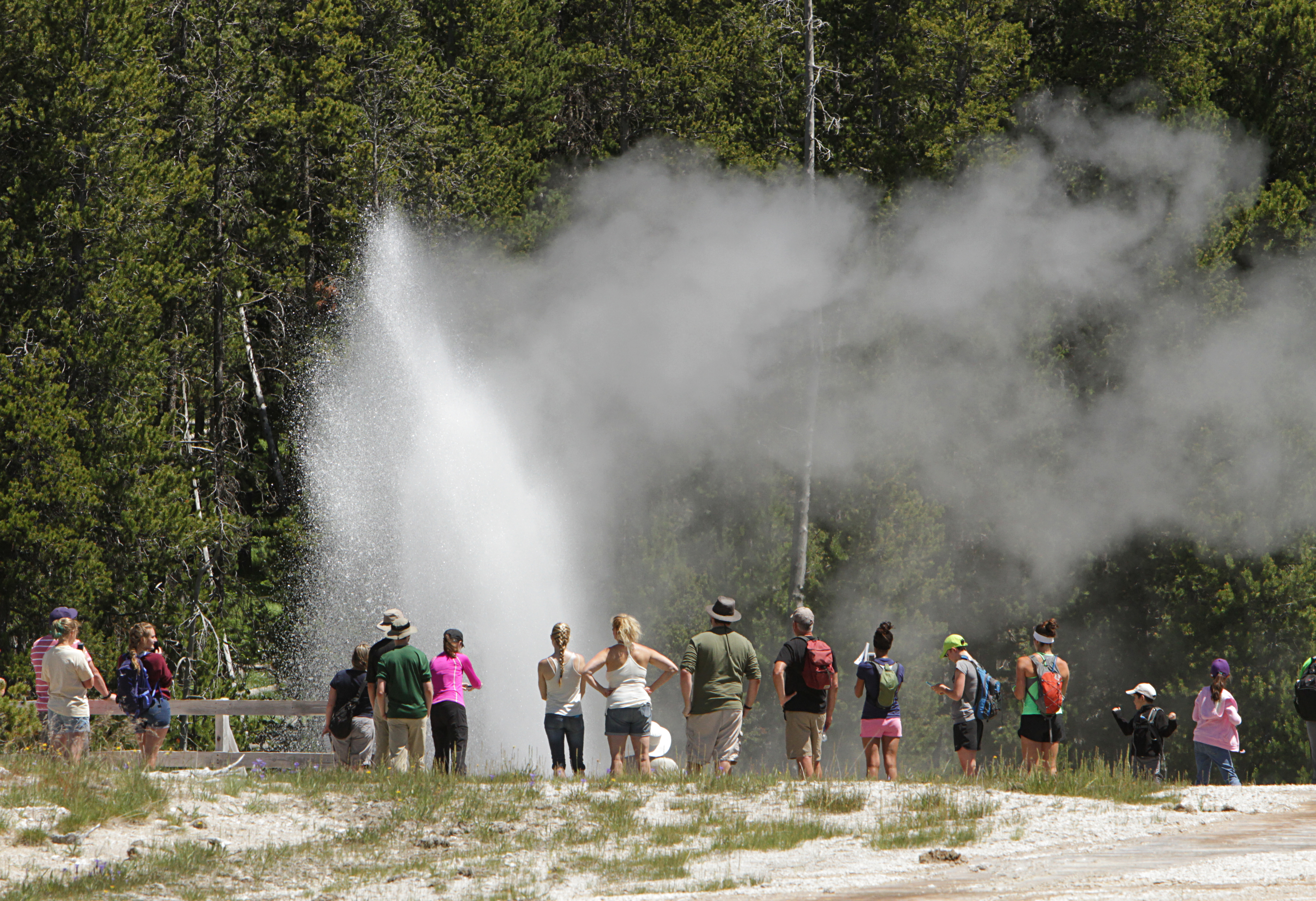
Aurum Geyser erupting
Black Pool
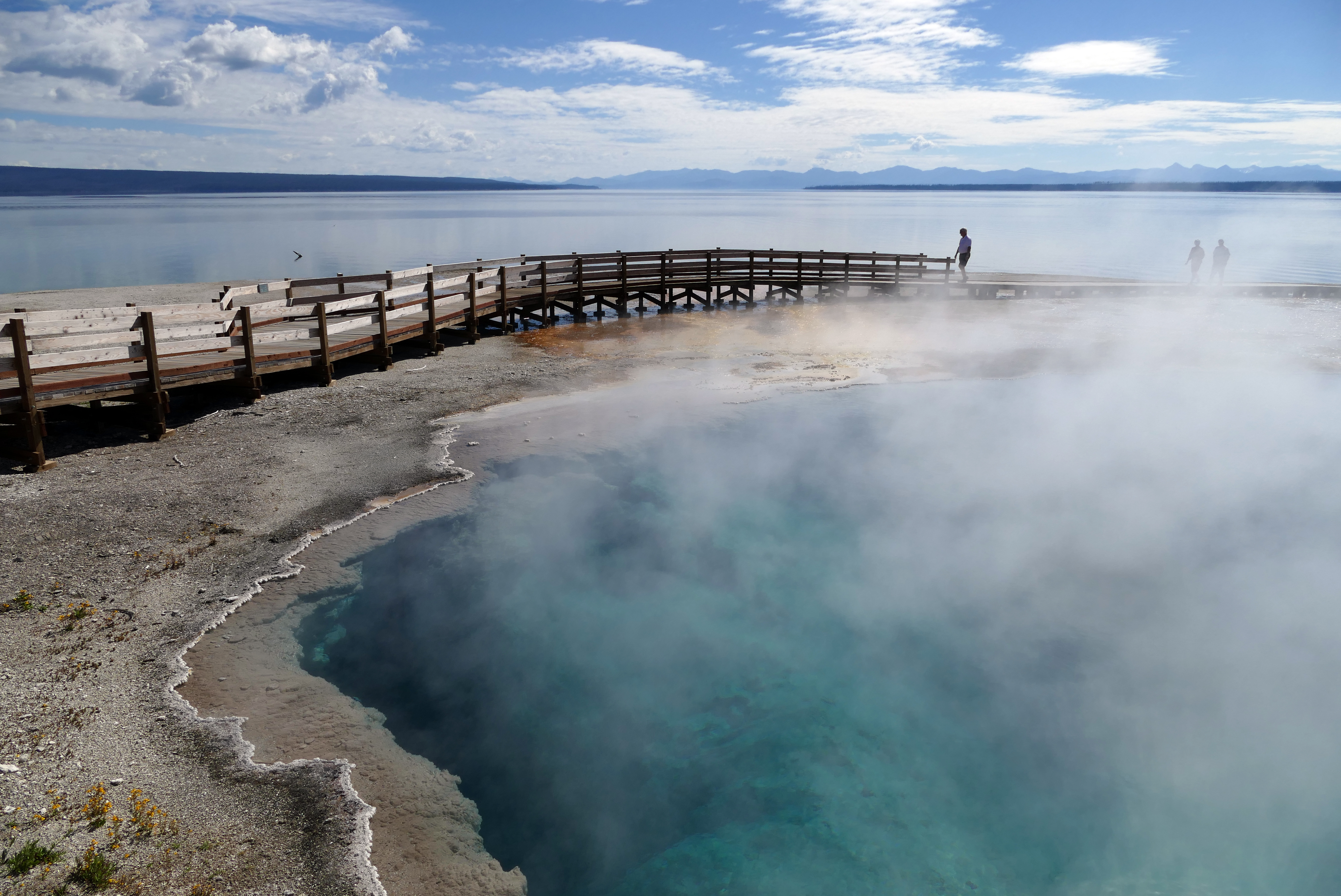
Black Pool at the West Thumb Geyser Basin
Beehive Geyser
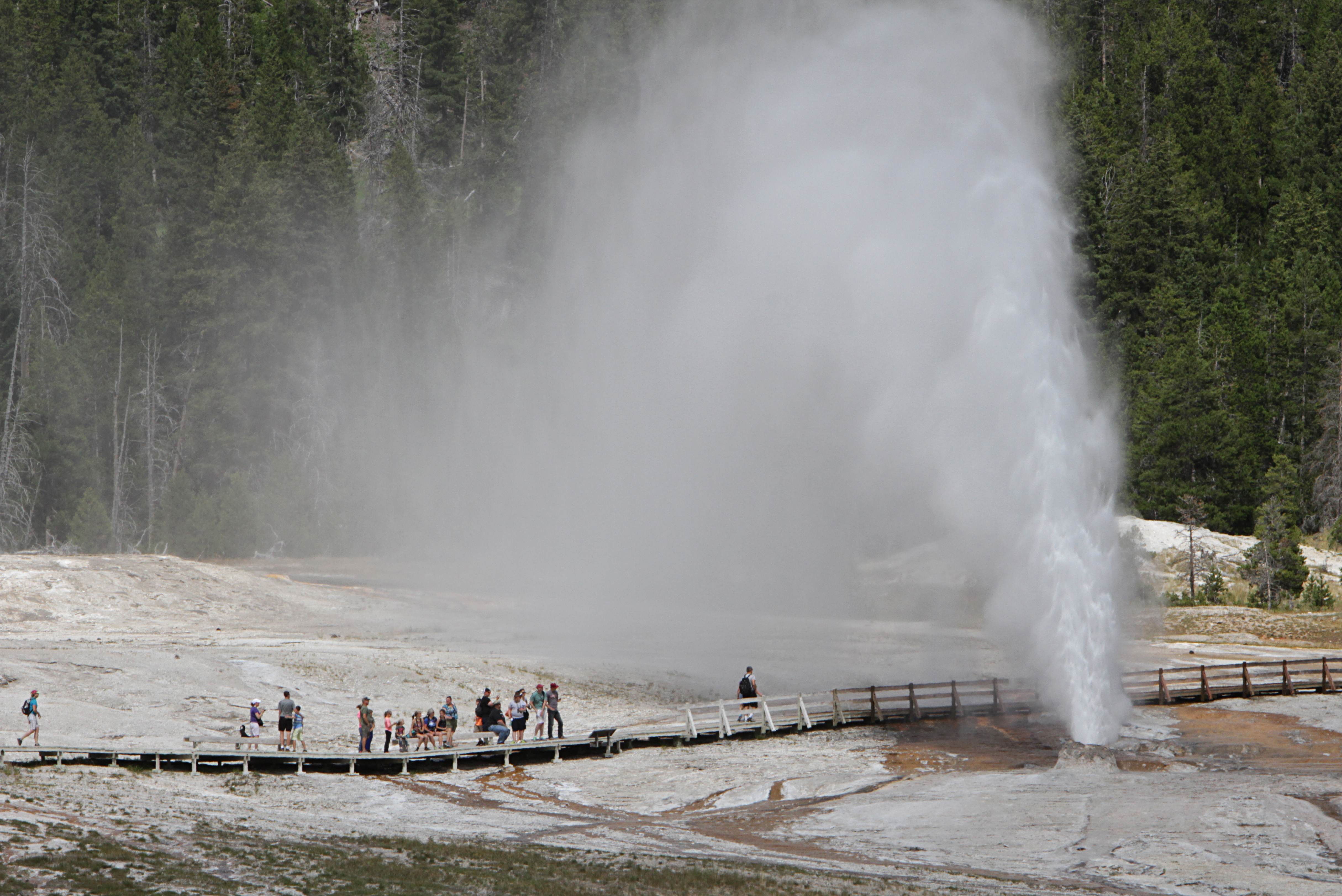
Visitors to the Upper Geyser Basin watch Beehive Geyser erupt.
Wolf howling
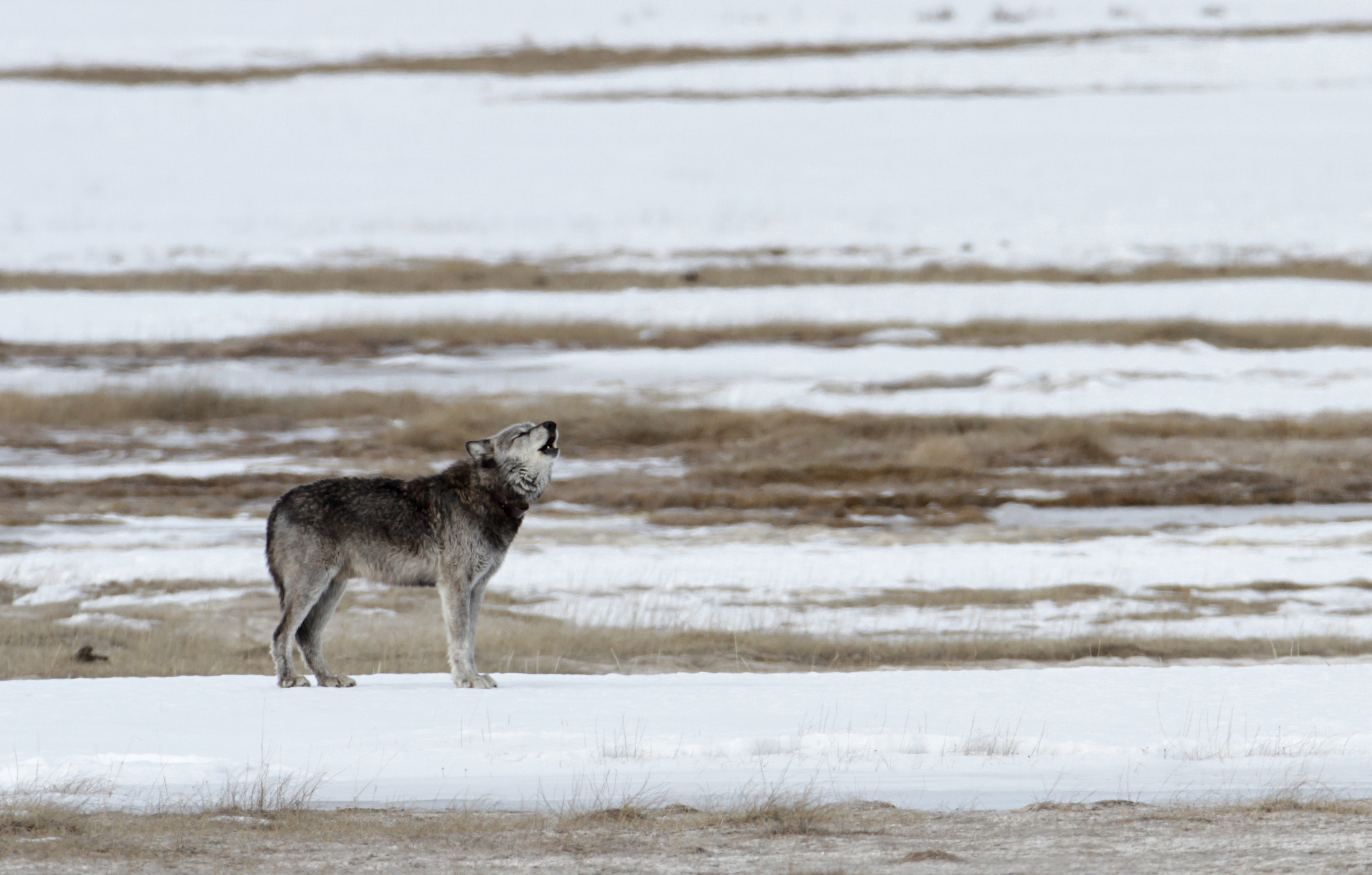
Alpha male of the Canyon wolf pack
Fishing Bridge Trailside Museum
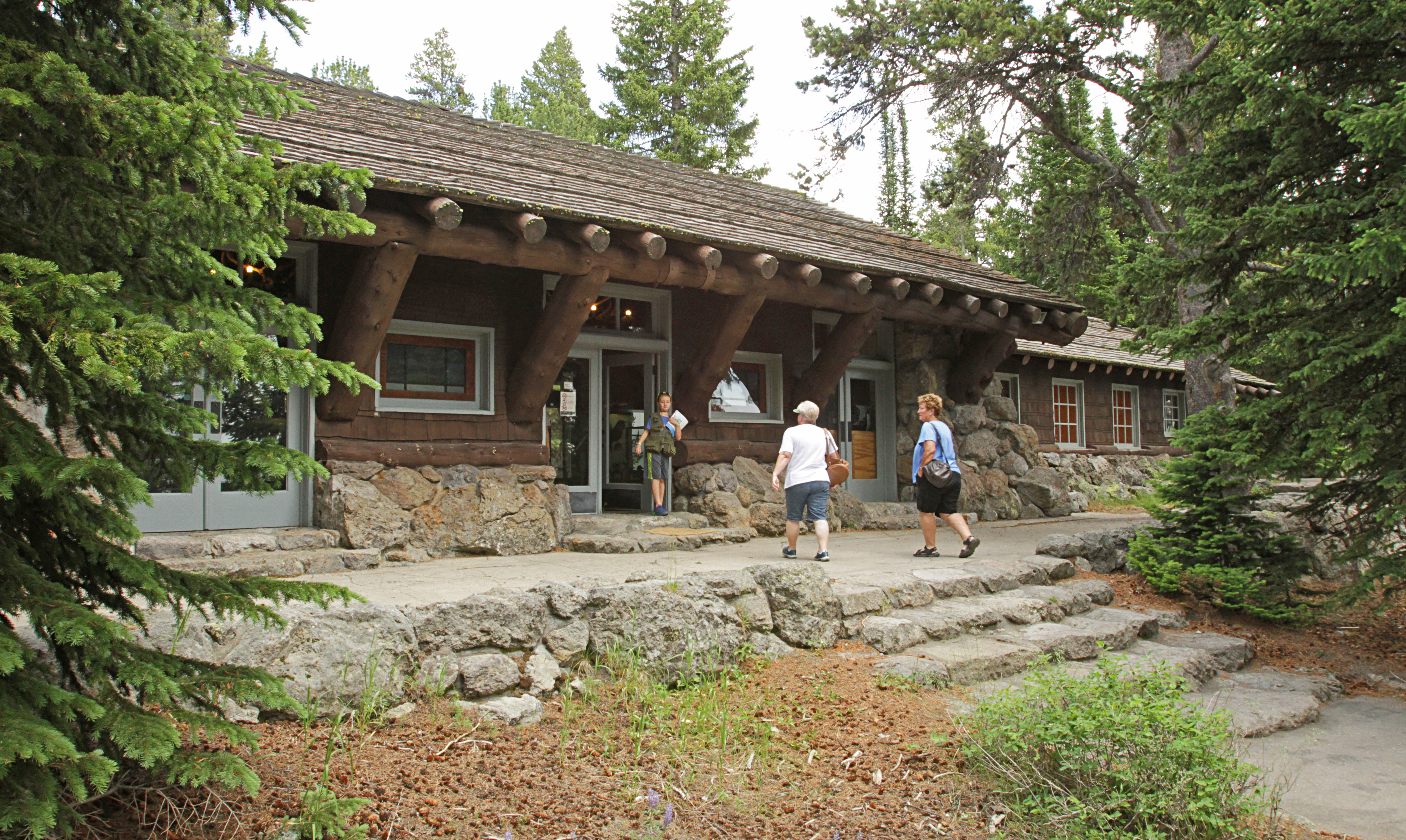
The stone-and-log architecture of Fishing Bridge Trailside Museum became a prototype for park buildings all around the country
Great Fountain Geyser
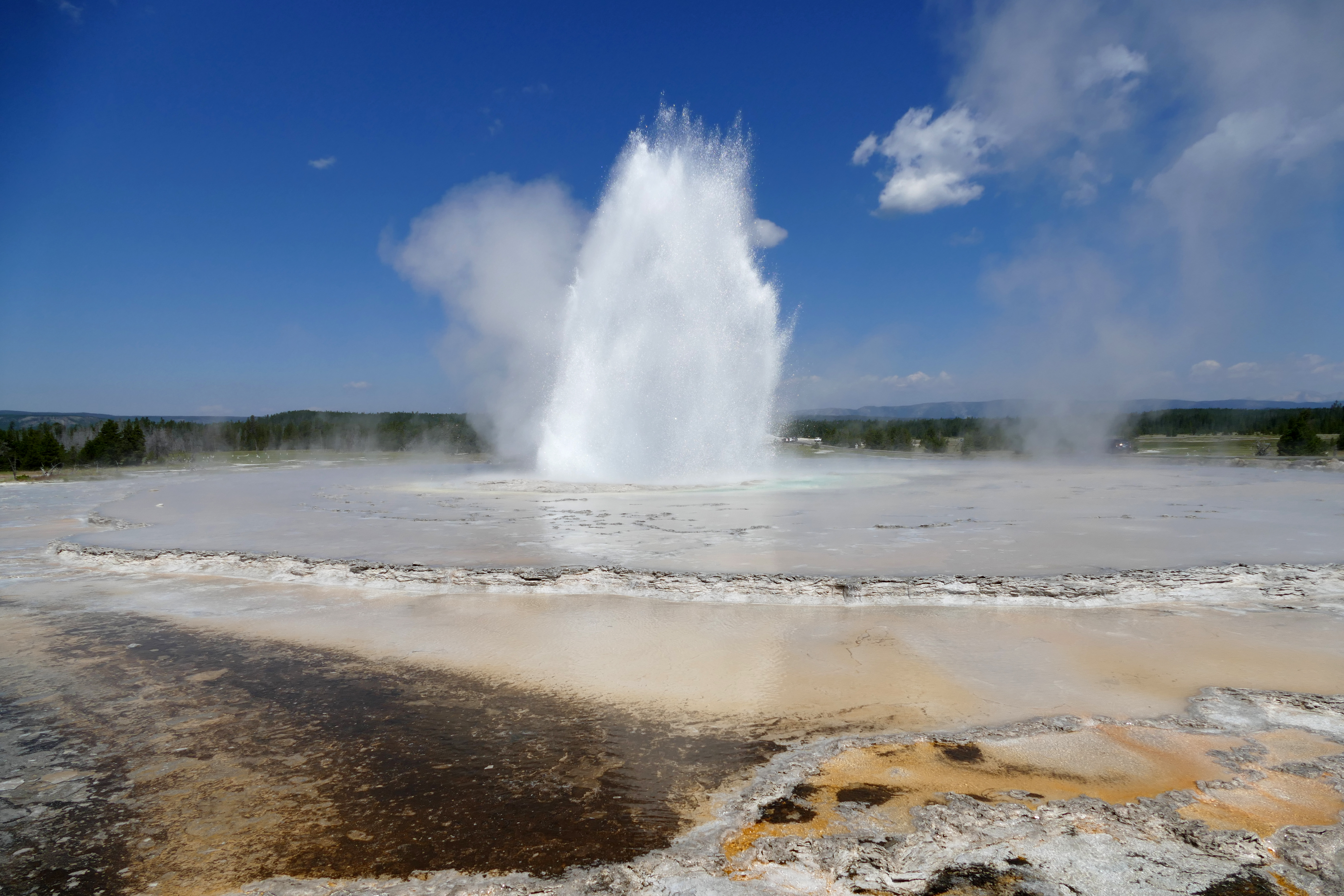
Great Fountain Geyser erupts against a blue summer sky
Old Faithful Geyser in winter
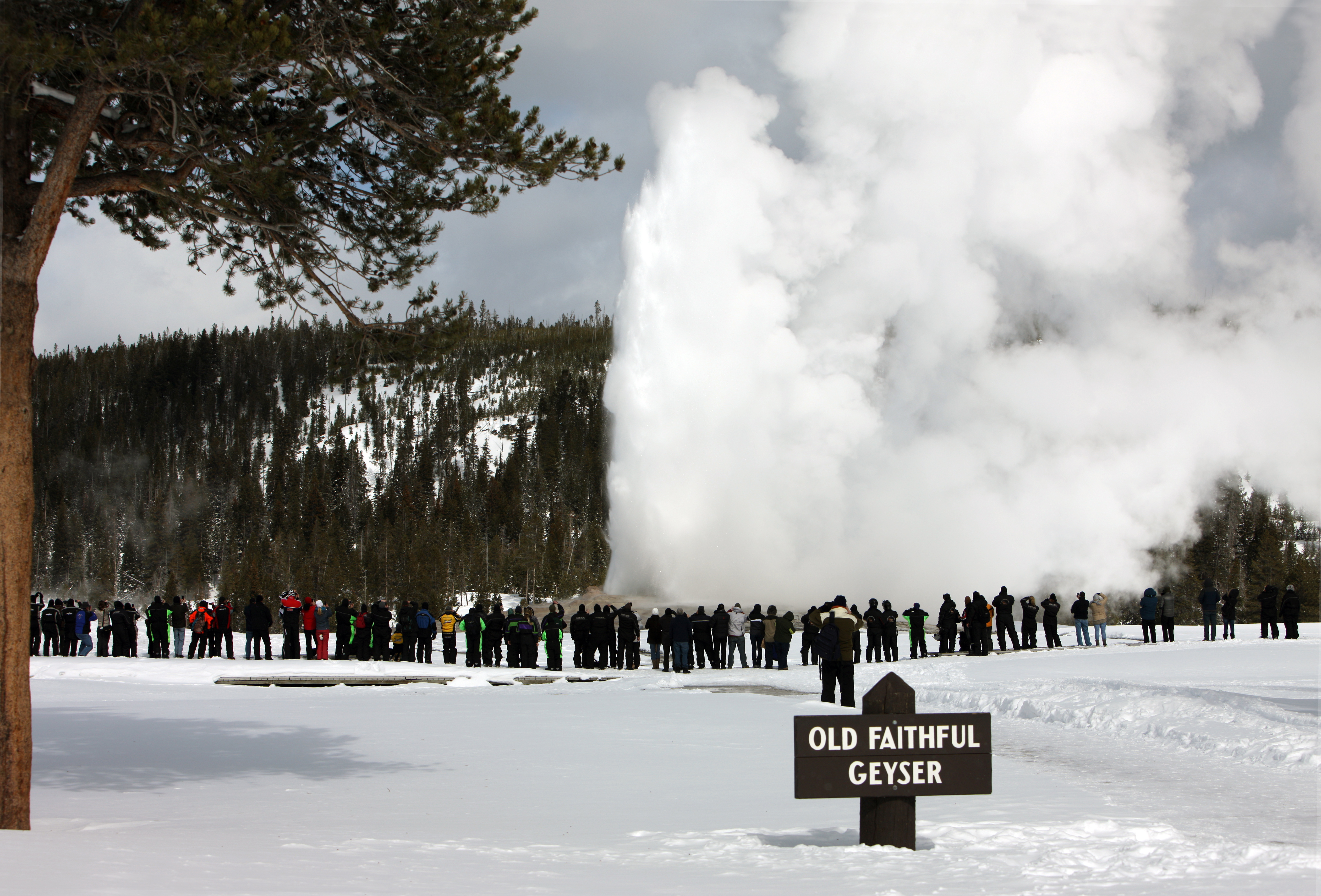
Winter is a magical time to watch Old Faithful Geyser erupt
Palette Spring
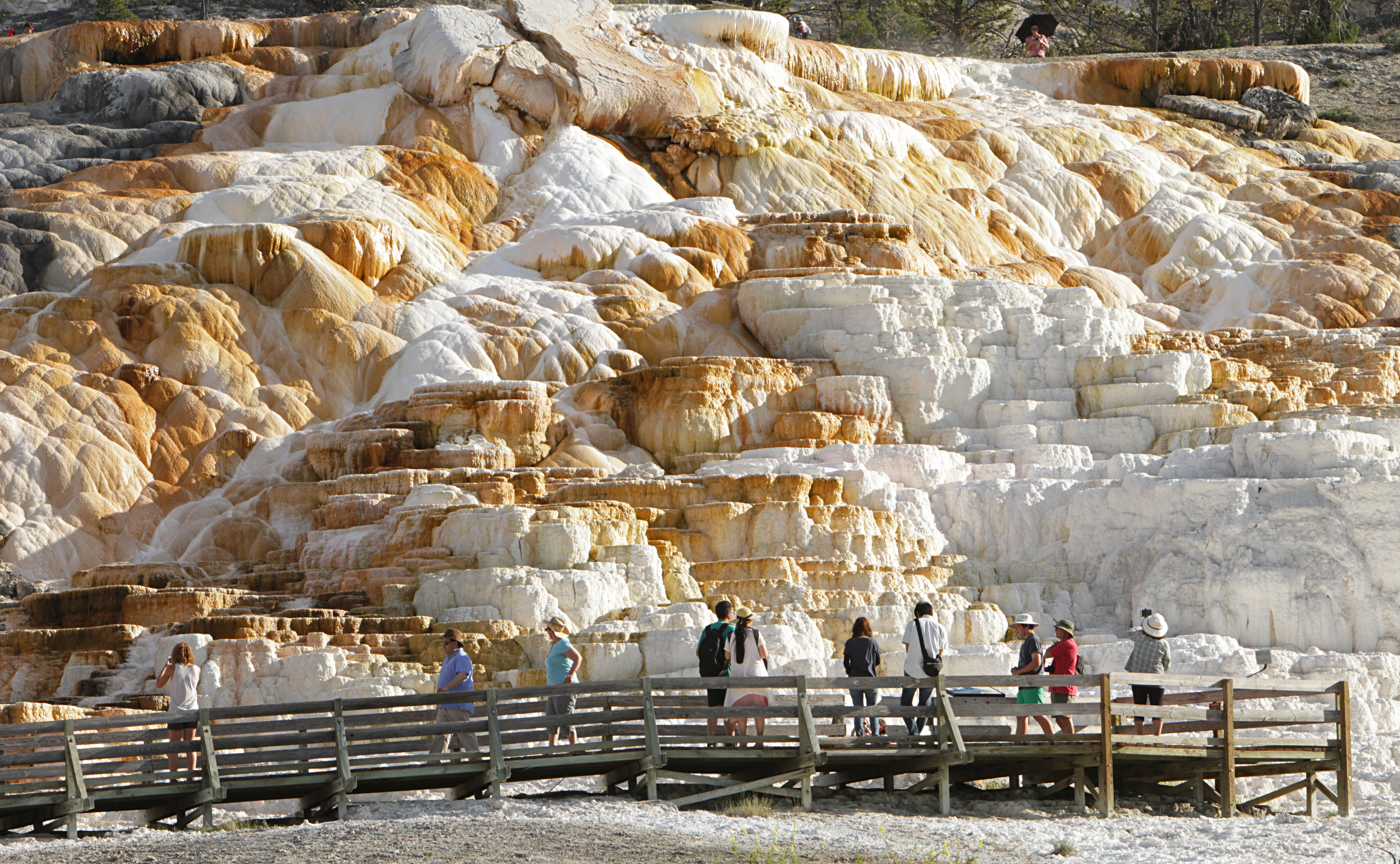
The vibrant colors of Palette Springs are formed by thermophiles—heat-loving organisms
Bighorn sheep
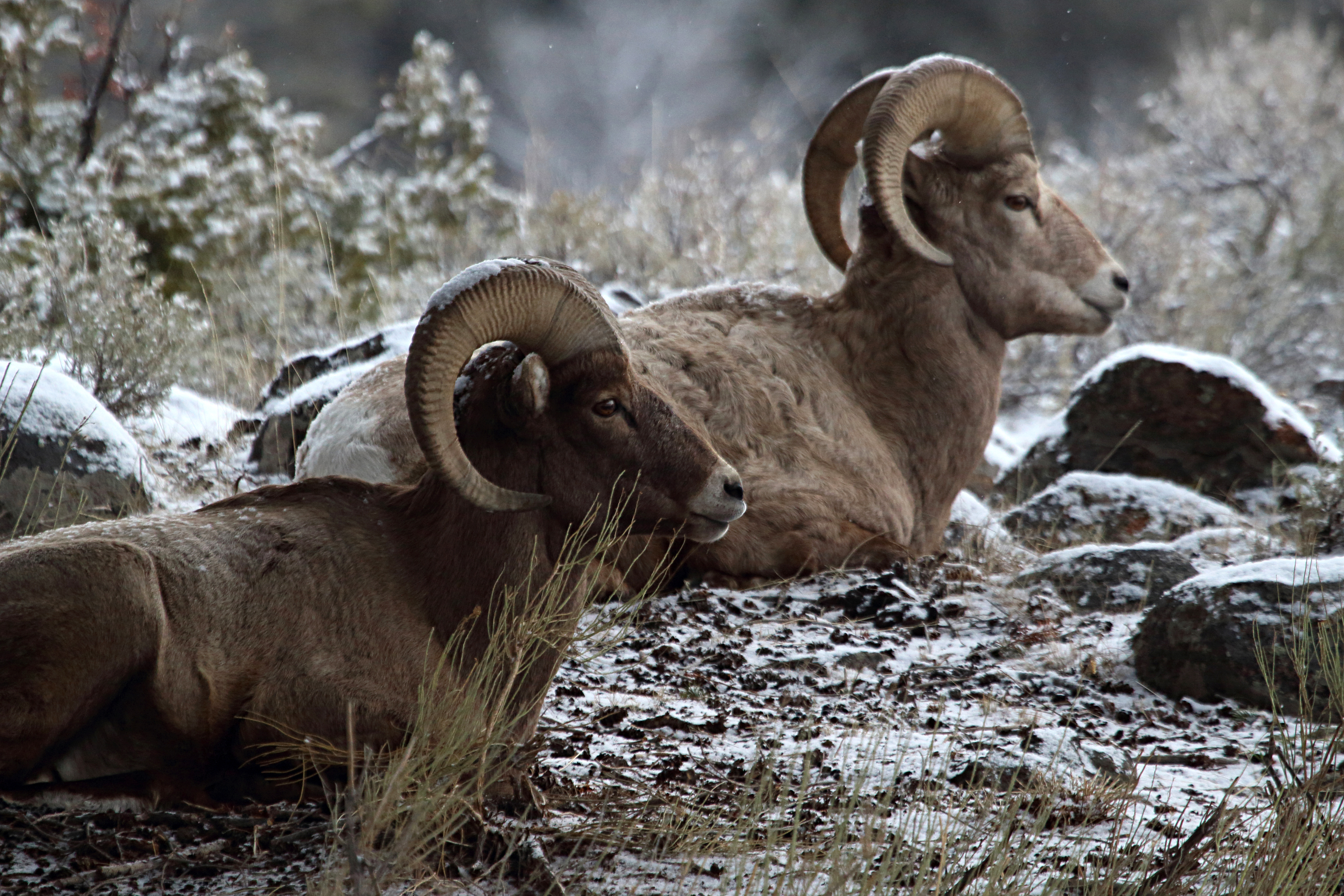
Two bighorn rams rest and chew their cud
Lower Falls from Artist Point
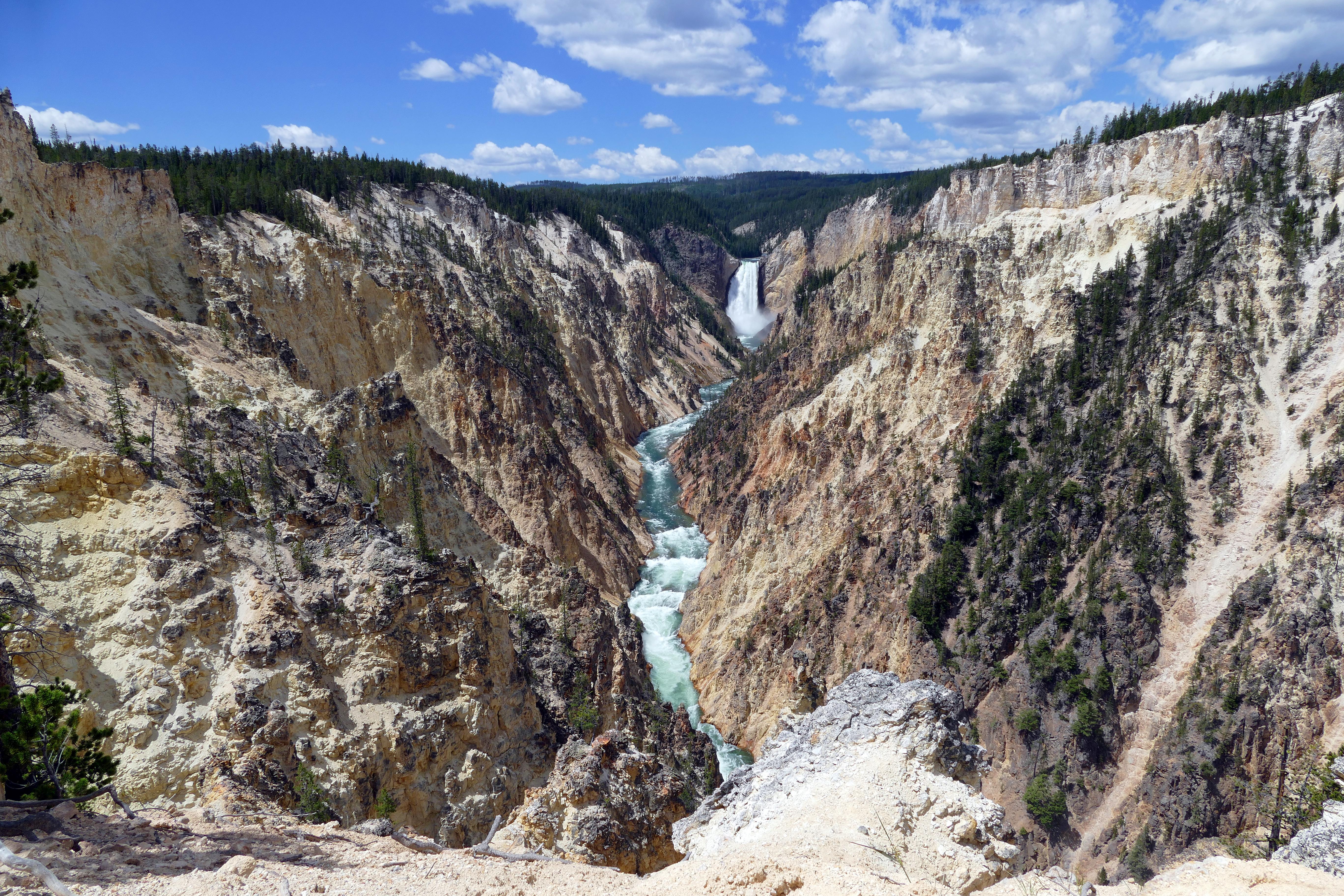
Lower Falls from Artist Point
Bison herd in a thermal area
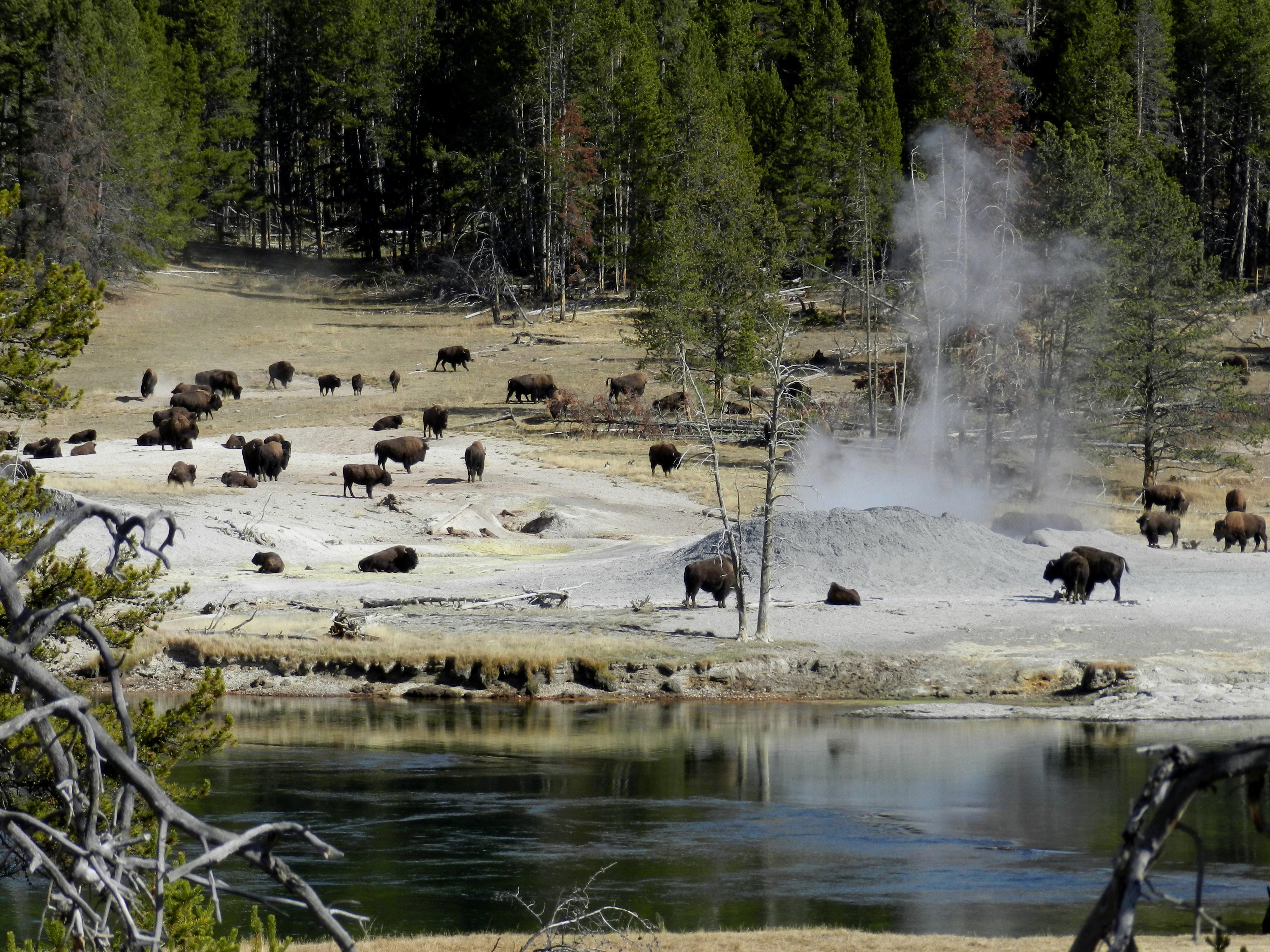
Bison near Mud Volcano
Grizzly bear
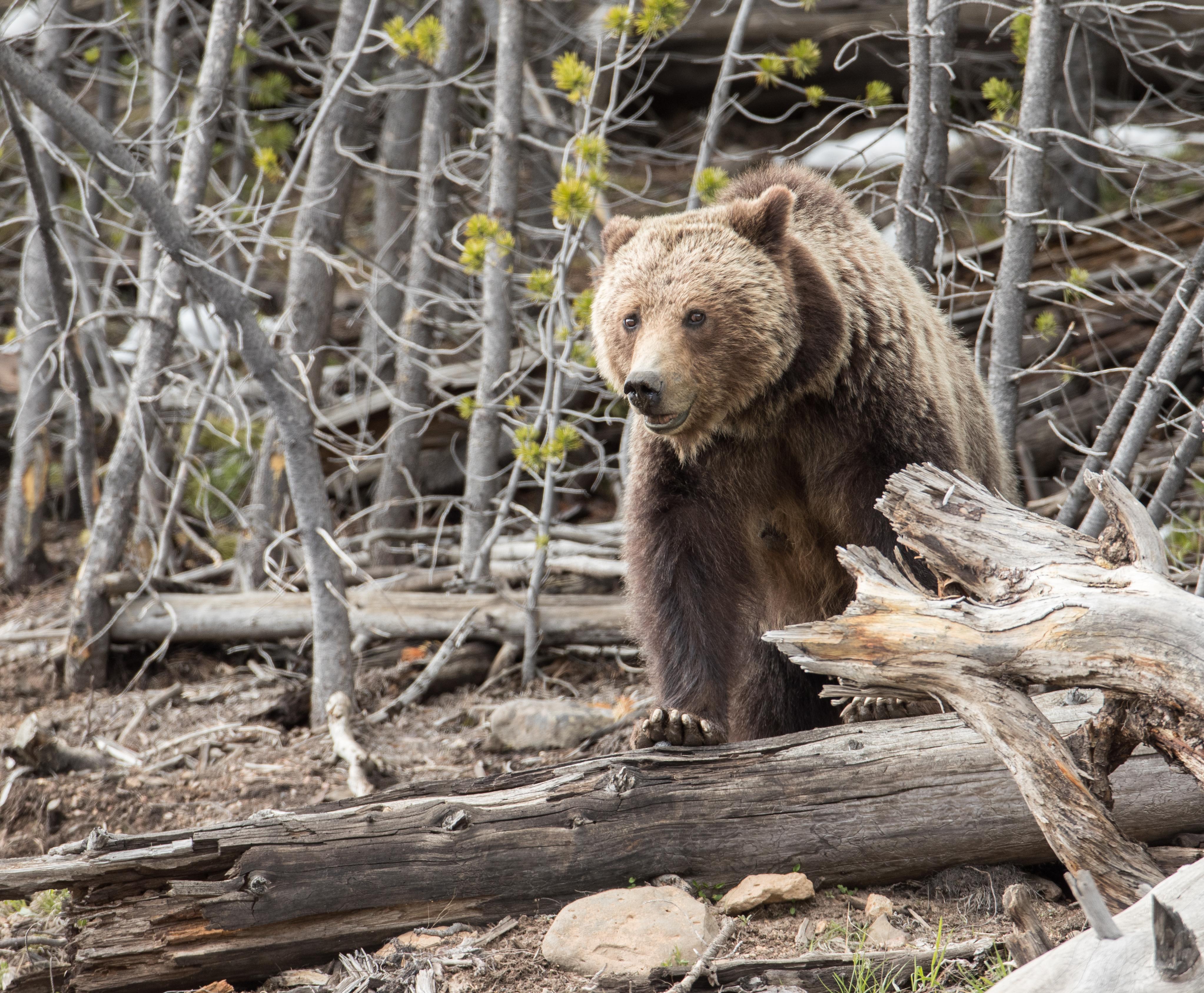
Grizzly bear in the woods
Yellowstone River
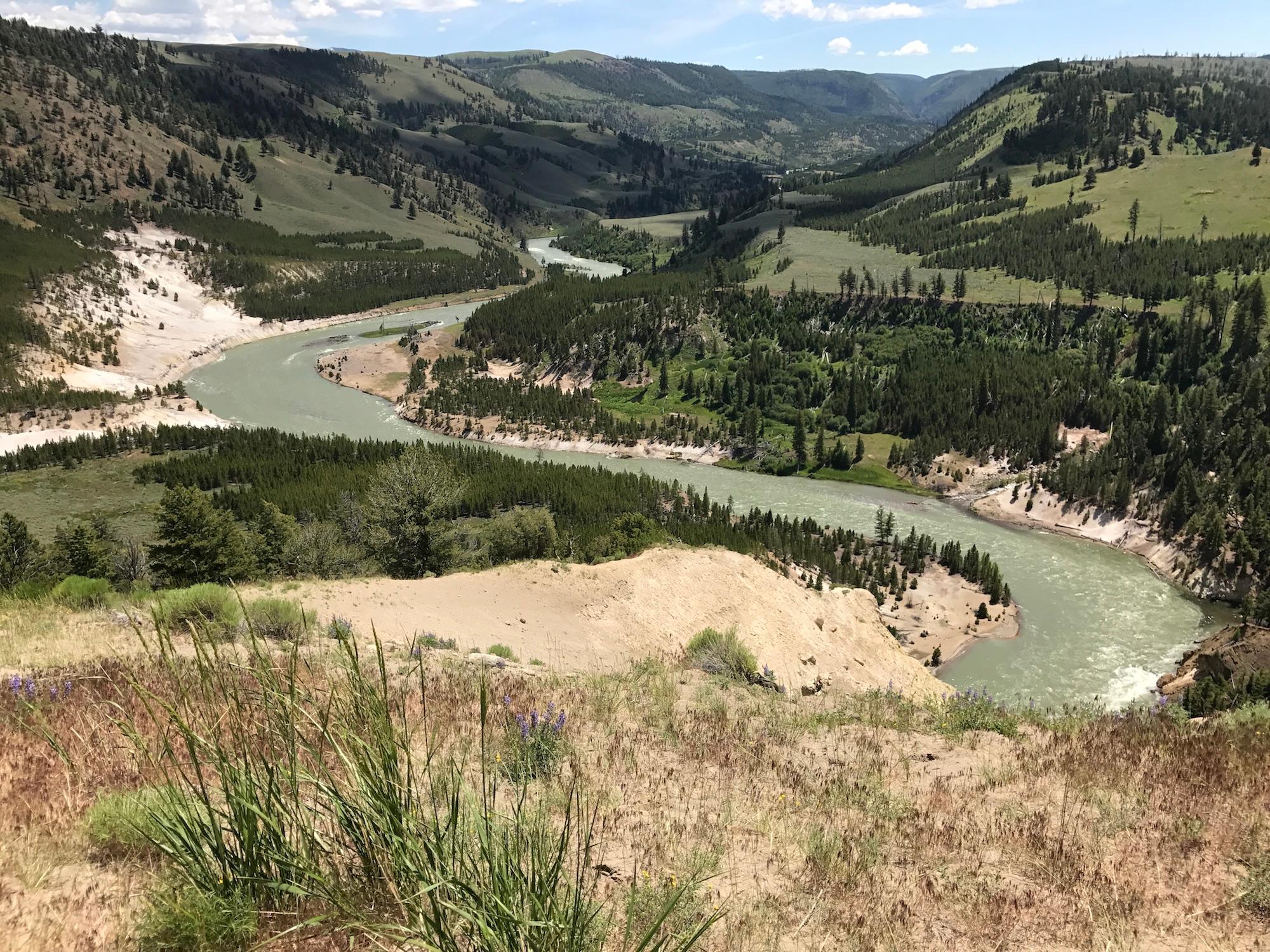
The Yellowstone River near Tower Fall